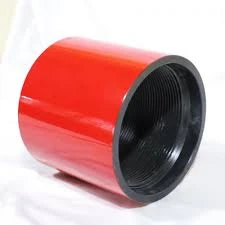- Afrikaans
- Albanian
- Amharic
- Arabic
- Armenian
- Azerbaijani
- Basque
- Belarusian
- Bengali
- Bosnian
- Bulgarian
- Catalan
- Cebuano
- Corsican
- Croatian
- Czech
- Danish
- Dutch
- English
- Esperanto
- Estonian
- Finnish
- French
- Frisian
- Galician
- Georgian
- German
- Greek
- Gujarati
- Haitian Creole
- hausa
- hawaiian
- Hebrew
- Hindi
- Miao
- Hungarian
- Icelandic
- igbo
- Indonesian
- irish
- Italian
- Japanese
- Javanese
- Kannada
- kazakh
- Khmer
- Rwandese
- Korean
- Kurdish
- Kyrgyz
- Lao
- Latin
- Latvian
- Lithuanian
- Luxembourgish
- Macedonian
- Malgashi
- Malay
- Malayalam
- Maltese
- Maori
- Marathi
- Mongolian
- Myanmar
- Nepali
- Norwegian
- Norwegian
- Occitan
- Pashto
- Persian
- Polish
- Portuguese
- Punjabi
- Romanian
- Russian
- Samoan
- Scottish Gaelic
- Serbian
- Sesotho
- Shona
- Sindhi
- Sinhala
- Slovak
- Slovenian
- Somali
- Spanish
- Sundanese
- Swahili
- Swedish
- Tagalog
- Tajik
- Tamil
- Tatar
- Telugu
- Thai
- Turkish
- Turkmen
- Ukrainian
- Urdu
- Uighur
- Uzbek
- Vietnamese
- Welsh
- Bantu
- Yiddish
- Yoruba
- Zulu
crossover pup joint
Understanding Crossover and the Importance of the Pup Joint
Crossover, in various contexts, refers to the interaction or merging of two distinct elements into a new form or configuration. When discussing the concept of the crossover pup joint, we delve into the fascinating world of mechanical engineering, particularly in the realm of power transmission systems. This article explores the significance of crossover pup joints, their applications, and the benefits they offer across different industries.
What is a Crossover Pup Joint?
A crossover pup joint is a type of pipe joint used in drilling operations. It is a short section of pipe that facilitates the connection between two different sizes or types of pipes. The design is crucial in various applications, including oil and gas drilling, where the immediate translation of power and pressure is essential for efficiency and safety.
Crossover joints allow engineers to adapt systems quickly, bridging the gap between varying pipe diameters or pressure ratings without requiring extensive modifications to the existing setup. This capability is significant in drilling operations where the demand to switch between different equipment sizes is frequent.
Applications of Crossover Pup Joints
Crossover pup joints find applications in multiple fields, the most notable being the oil and gas industry. In drilling rigs, these joints are essential for connecting drill pipes and casing systems of various sizes, which can differ based on geological conditions and drilling depths.
In addition to oil and gas, crossover pup joints are also used in water well drilling, geothermal drilling, and construction projects that necessitate the use of pipes of differing diameters
. The joints can accommodate various thread types, ensuring that cross-compatibility among equipment is maintained, which is vital for operational efficiency and cost-effectiveness.crossover pup joint

Benefits of Using Crossover Pup Joints
1. Versatility One of the primary advantages of crossover pup joints is their versatility. By allowing for the connection of different pipe sizes and types, they enable seamless integration of various systems. This flexibility is invaluable in dynamic environments where adaptability is key to maintaining productivity.
2. Cost-Effectiveness Crossover pup joints can significantly reduce costs associated with material purchases and labor. Instead of replacing entire pipe sections or purchasing multiple adapters, a crossover pup joint allows operators to continue using existing equipment while achieving the necessary connections. This feature leads to reduced downtime and increased operational efficiency.
3. Safety and Reliability Properly designed crossover pup joints enhance the safety and reliability of drilling operations. Well-made joints minimize the risk of leaks and failures, which can pose considerable hazards in high-pressure environments. When the structural integrity of the joints is ensured, the overall safety of operations improves.
4. Ease of Maintenance Crossover pup joints are generally easy to inspect and maintain. Their simplicity in design ensures that any potential issues can be quickly identified and rectified, contributing to smoother operations and reducing the chances of unexpected downtime.
5. Customizable Options Manufacturers often offer customizable crossover pup joints that can meet specific operational requirements. Whether it involves adjusting the length, thread type, or material composition, customization ensures that the joints can be tailored to meet the particular needs of diverse applications.
Conclusion
In summary, crossover pup joints play a crucial role in various industries, particularly in drilling operations within the oil and gas sector. Their ability to connect differing pipe sizes and types enhances flexibility, cost-efficiency, safety, and maintenance. As industries continue to evolve and face new challenges, the importance of such adaptable components will only increase, ensuring that crossover pup joints remain a vital aspect of mechanical engineering and operations.
-
Tubing Pup Joints: Essential Components for Oil and Gas OperationsNewsJul.10,2025
-
Pup Joints: Essential Components for Reliable Drilling OperationsNewsJul.10,2025
-
Pipe Couplings: Connecting Your World EfficientlyNewsJul.10,2025
-
Mastering Oilfield Operations with Quality Tubing and CasingNewsJul.10,2025
-
High-Quality Casing Couplings for Every NeedNewsJul.10,2025
-
Boost Your Drilling Efficiency with Premium Crossover Tools & Seating NipplesNewsJul.10,2025







